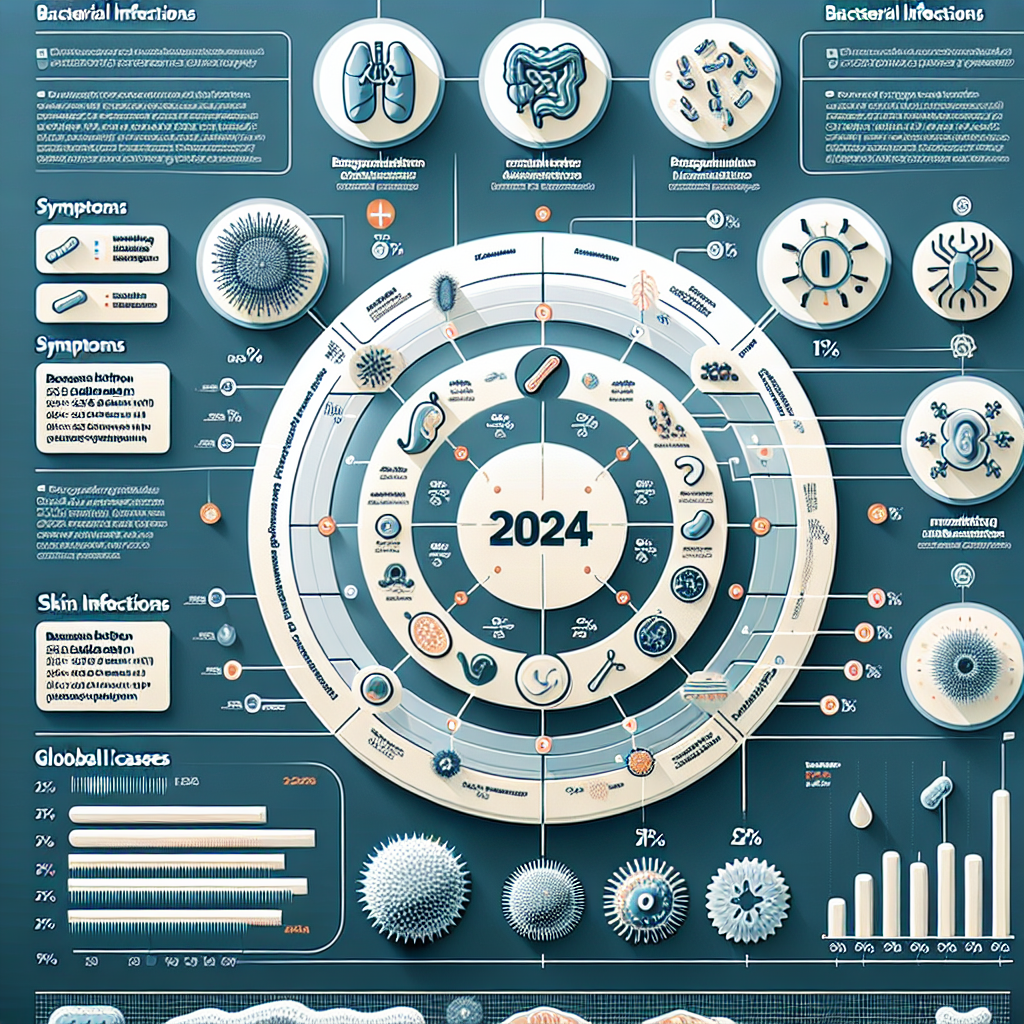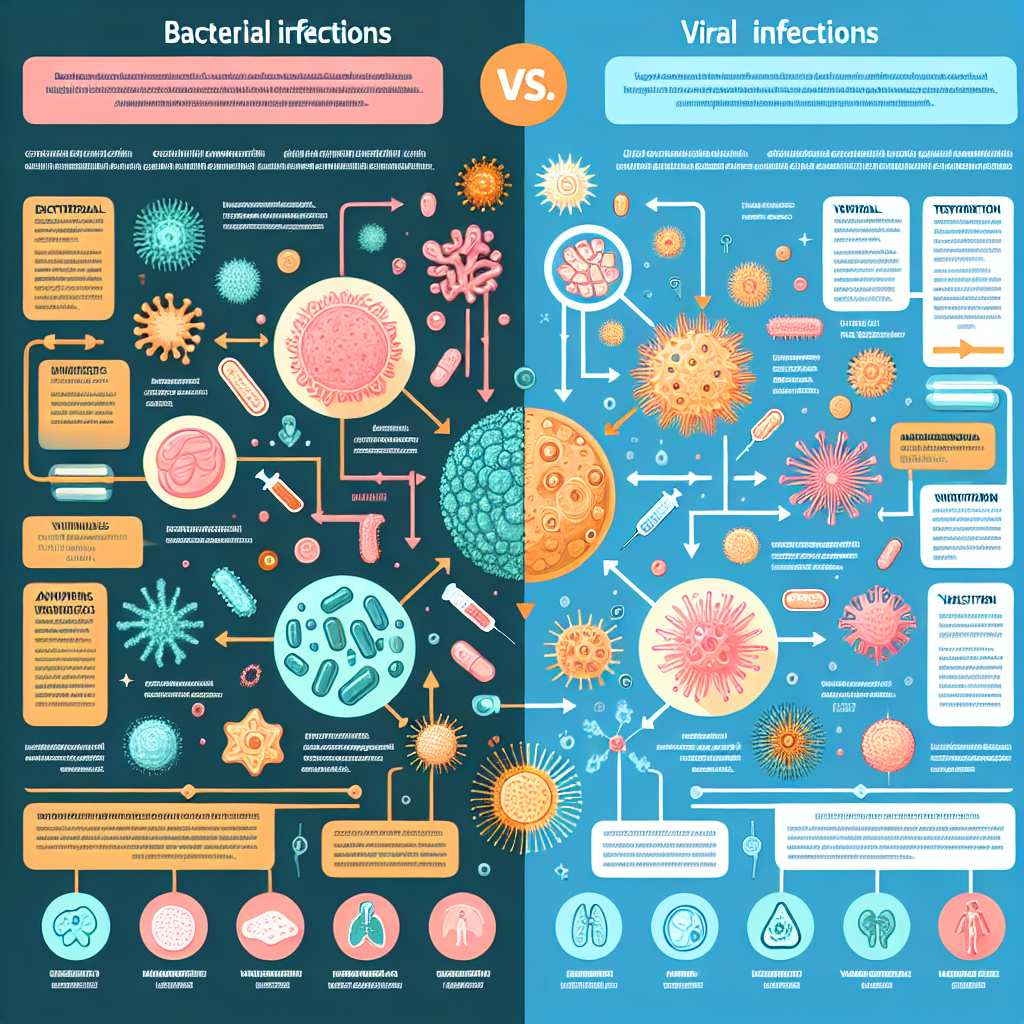Most common bacterial infections in 2024
In 2024, bacterial infections remain a significant public health concern, impacting millions of individuals globally. Understanding the prevalent bacterial pathogens and their associated diseases is crucial for effective management and prevention strategies. This article will delve into the most common bacterial infections of 2024, highlighting key pathogens and the diseases they cause, current trends in treatment approaches, and vital preventive measures.
Overview of Bacterial Infections Predominant in 2024
Bacterial infections continue to be a leading cause of morbidity and mortality across the globe. In 2024, several bacterial strains have become increasingly common, with some exhibiting antibiotic resistance that complicates treatment options. The emergence of multidrug-resistant (MDR) bacteria has made infections like Methicillin-resistant Staphylococcus aureus (MRSA) and Carbapenem-resistant Enterobacteriaceae (CRE) particularly concerning for healthcare providers.
Additionally, infections such as Streptococcus pneumoniae and Escherichia coli remain prevalent, leading to diseases ranging from pneumonia to urinary tract infections (UTIs). The dynamics of bacterial infections are further influenced by factors such as climate change, urbanization, and globalization, which facilitate the spread of pathogens and increase the risk of outbreaks. Surveillance and monitoring efforts have escalated to identify and respond to these infections, aiming for early intervention to mitigate widespread impacts.
The role of healthcare-associated infections (HAIs) has also come to the forefront in 2024, with hospitals and clinics battling infections acquired during medical treatment or procedures. As a result, stringent infection control protocols are more critical than ever, necessitating collaboration among healthcare workers, patients, and public health officials to curb the incidence of these infections.
Key Bacterial Pathogens and Their Associated Diseases
Among the most common bacterial pathogens in 2024, Streptococcus pneumoniae remains a leading cause of community-acquired pneumonia, meningitis, and otitis media. The pneumococcal vaccine continues to play a fundamental role in prevention; however, vaccine-resistant strains are a growing concern. Furthermore, the rise of invasive Streptococcus pyogenes infections has been linked to increased instances of necrotizing fasciitis and toxic shock syndrome, emphasizing the need for heightened awareness and swift therapeutic response.
Another significant player in bacterial infections is Escherichia coli, with uropathogenic strains being the primary cause of UTIs. E. coli can also lead to severe gastrointestinal diseases, particularly in the context of foodborne outbreaks. The ongoing challenge is managing antibiotic resistance, as treatment options for resistant strains are limited, pushing healthcare systems to rethink empirical therapy strategies.
Moreover, Neisseria gonorrhoeae continues to evolve, showing resistance to multiple antibiotics, leading to treatment failures in gonorrhea management. Public health initiatives focusing on sexual health and routine screening are vital to controlling this infection’s spread. Ongoing research into novel antimicrobials and vaccines for these pathogens is essential for future control efforts and improving patient outcomes.
Current Trends in Bacterial Infection Treatment Approaches
As of 2024, the treatment of bacterial infections is witnessing a paradigm shift due to the increasing prevalence of antibiotic resistance. Healthcare professionals are now adopting a more tailored approach to antibiotic prescribing, emphasizing the importance of antibiotic stewardship. This involves using narrow-spectrum antibiotics whenever possible and reserving broad-spectrum options for more severe cases or when the specific pathogen is not identified.
In addition to traditional antibiotics, there is a growing interest in alternative therapies, including bacteriophage therapy, which utilizes viruses that specifically target bacteria. This innovative approach shows promise, especially for treating infections caused by MDR organisms. Furthermore, research into immunomodulatory therapies aims to enhance the body’s natural defense mechanisms against bacterial pathogens, providing a complementary strategy alongside conventional antibiotics.
Telemedicine has also emerged as a valuable tool in managing bacterial infections, allowing for remote consultations and timely interventions. By harnessing digital health technologies, healthcare providers can monitor patients with bacterial infections more effectively and adjust treatment plans based on real-time data. These trends indicate a shift towards more personalized and effective management of bacterial infections in 2024.
Preventive Measures Against Common Bacterial Infections
Preventing bacterial infections relies heavily on public health initiatives, vaccination programs, and education. In 2024, immunization against common pathogens such as Streptococcus pneumoniae and Neisseria meningitidis remains critical in reducing infection rates. Widespread vaccination campaigns are essential, particularly in vulnerable populations such as children and the elderly, to mitigate the impact of these infections.
Hand hygiene has gained renewed emphasis as a simple yet powerful preventive measure against bacterial transmission. The promotion of regular handwashing with soap and water or the use of alcohol-based hand sanitizers is crucial in healthcare settings and the community. Educational initiatives aimed at raising awareness about proper hand hygiene practices can significantly reduce the incidence of bacterial infections.
Furthermore, safe food handling practices are essential in preventing foodborne illnesses caused by bacteria such as Salmonella and E. coli. Public health agencies continue to advocate for proper cooking techniques, safe food storage, and thorough cleaning of surfaces to minimize the risk of food contamination. By implementing these preventive measures, communities can work together to reduce the burden of bacterial infections in 2024.
In conclusion, bacterial infections in 2024 pose an ongoing challenge to public health, with key pathogens leading to significant morbidity and mortality. Understanding the dynamics of these infections and their associated diseases is critical for healthcare providers and the general population. As treatment approaches evolve and preventive measures are strengthened, collaboration across various sectors will be essential to combat the threat of bacterial infections effectively. Continued research and education are vital to ensuring that we remain equipped to face the challenges posed by these resilient pathogens.
For more information on bacterial infections, visit WHO, CDC, and NIH.
Top hand sanitizers for virus protectionSeasonal flu vaccine effectivenessLatest research on virus transmissionRelevant LinkRelevant LinkRelevant Link













